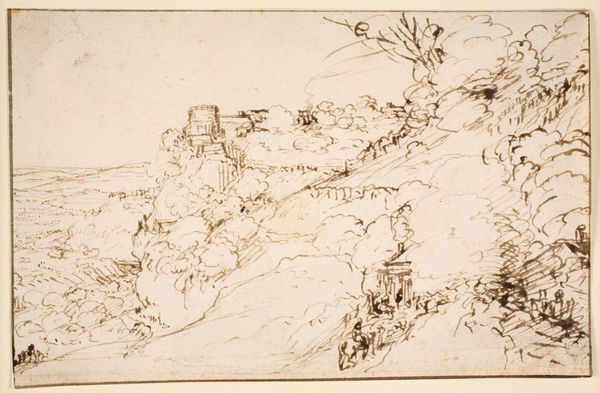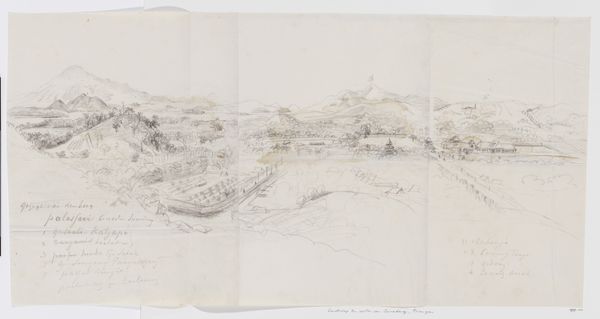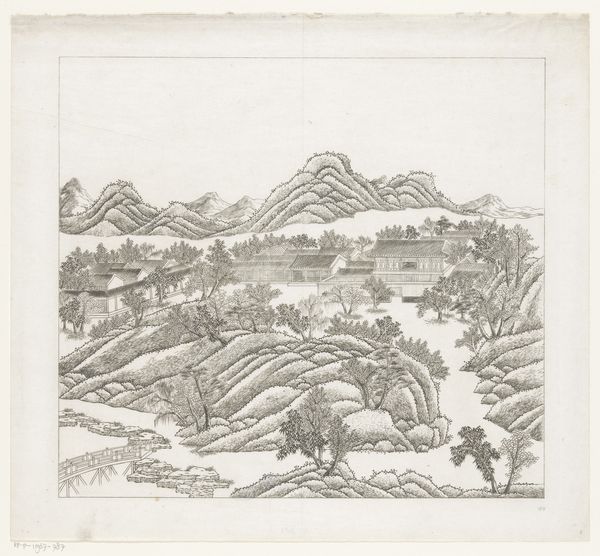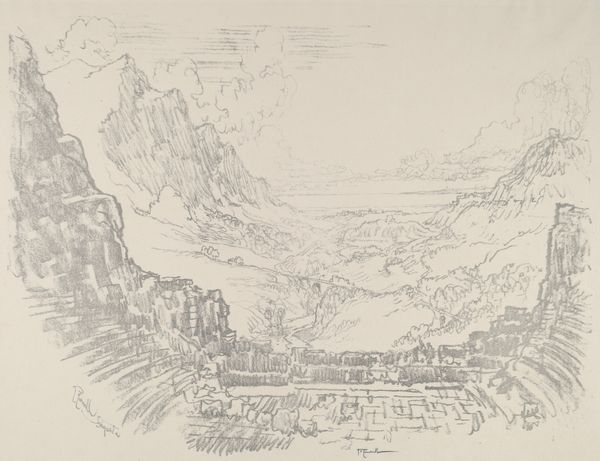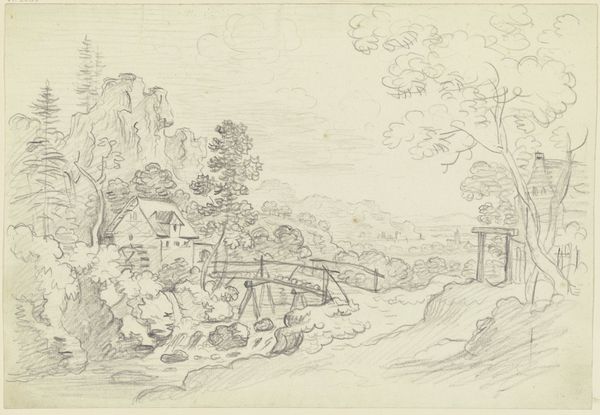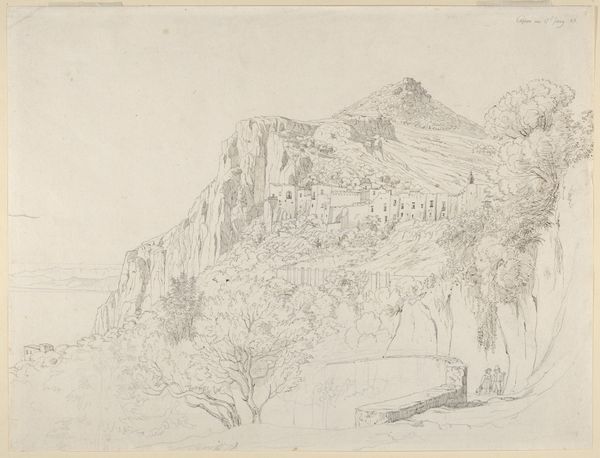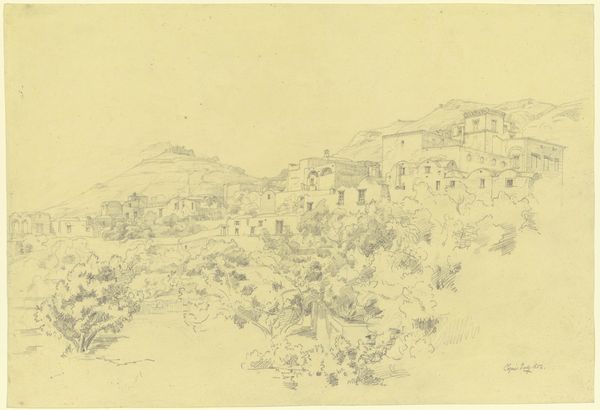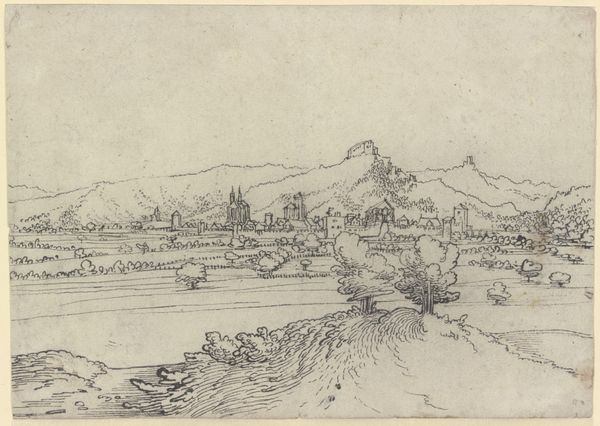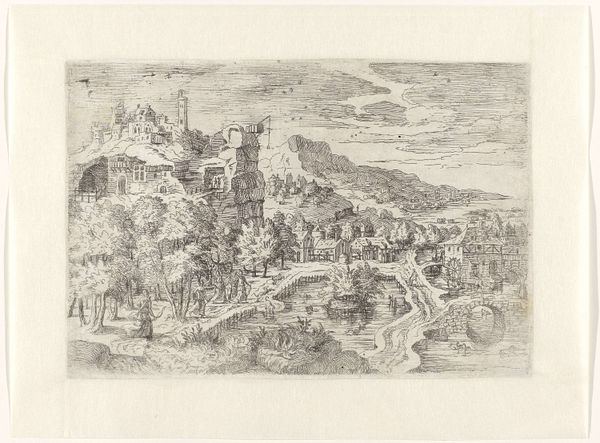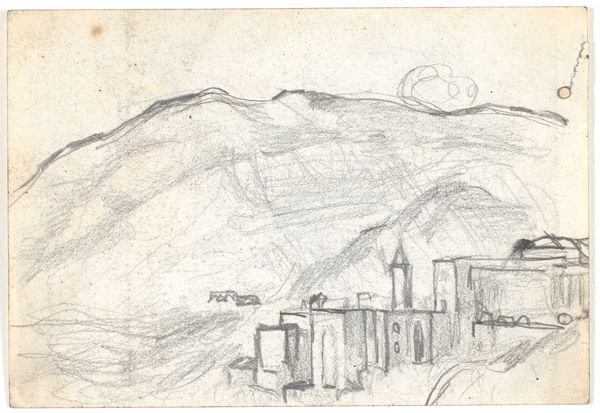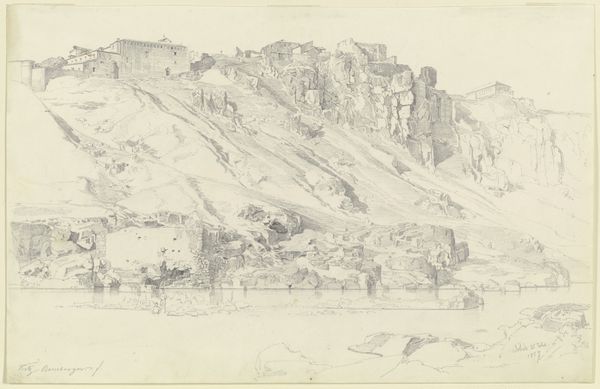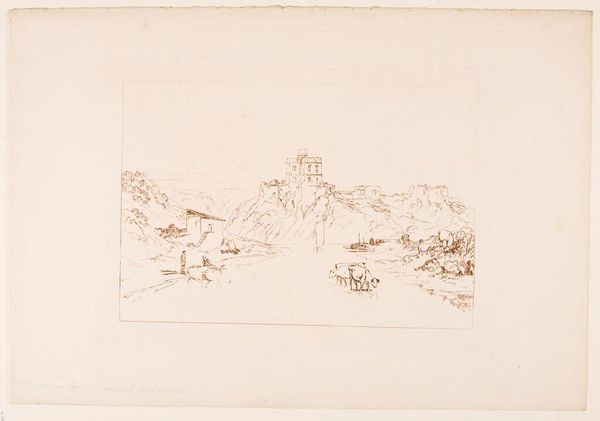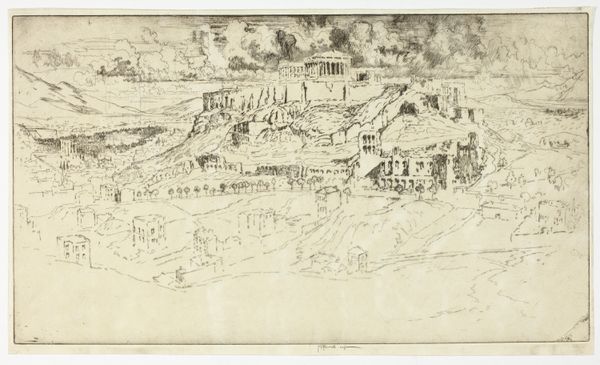
drawing, pencil, architecture
#
drawing
#
neoclacissism
#
ink drawing
#
pen drawing
#
pen illustration
#
pen sketch
#
landscape
#
classical-realism
#
figuration
#
personal sketchbook
#
ink drawing experimentation
#
ancient-mediterranean
#
pen-ink sketch
#
pencil
#
pen work
#
sketchbook drawing
#
sketchbook art
#
architecture
Dimensions: 14 5/16 x 22 1/4 in. (36.4 x 56.5 cm)
Copyright: Public Domain
Curator: Here we have "A View of the Ancient City (Parthenon?)" by an anonymous artist, created sometime between 1800 and 1810. It's currently held in the collection of the Metropolitan Museum of Art. Editor: My initial reaction is of something quite delicate. The artist uses such a fine line, creating a world that feels both grand and intimate, even somewhat fragile. Curator: Yes, that line work is critical. The artist uses both pencil and ink to describe not just the scene, but also texture, volume and architectural specificity. It appears almost like an architectural sketch combined with elements of a personal sketchbook. Note the strategic deployment of perspective, the way lines converge, implying depth... Editor: And the figures in the foreground, so casually rendered, draw us into a tableau. It feels almost as if we're invited to contemplate the intersection between this classical grandeur and ordinary lives. I am thinking about colonialism and travel – who is given the opportunity to see, document, and lay claim to spaces that have a long history? Curator: Indeed, the work does sit comfortably within Neoclassical traditions – you can observe it in the detailed architectural forms and the picturesque landscape. Consider the period: Europe's rediscovery of Classical antiquity fueled the art market with depictions of Greek and Roman heritage. Also, at the time the drawing was made, the Parthenon was not the protected and conserved heritage site that we now appreciate today. Editor: Exactly. One wonders about the narrative the anonymous artist is aiming to convey about Greece and perhaps western culture itself, even if inadvertently. This artwork is not purely an innocent capturing of beauty – it's entrenched within broader themes of history, power, and how we connect to the past. Curator: The formal elegance intertwined with this suggestion of historical layering definitely lends the piece its lasting allure. Editor: Absolutely. I came here simply observing its formal elements and now I realize it tells so much about the power structures underlying our historical narratives and artistic traditions.
Comments
No comments
Be the first to comment and join the conversation on the ultimate creative platform.

